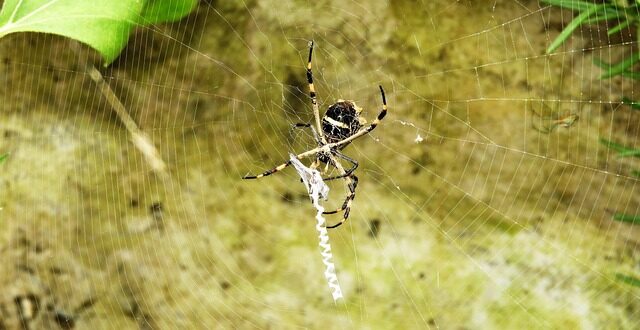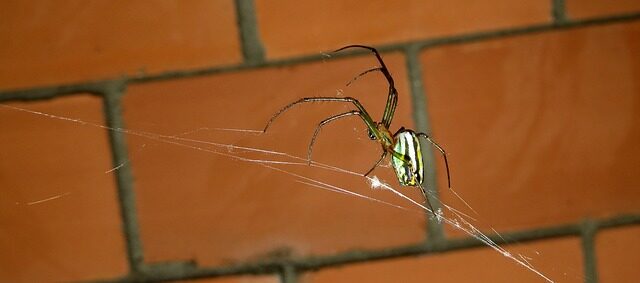How to Identify and Treat Spider Bites Effectively

Spider bites may often be harmless, but they can sometimes lead to severe health issues, particularly when they involve species like the black widow or brown recluse spider. In this comprehensive guide, we'll explore the critical steps on how to identify and treat spider bites. Whether you're at home or venturing into spider habitats, knowing these tips can help you manage spider bite incidents effectively.
- What Are Spider Bites?
- How Can You Identify a Spider Bite?
- What Are the Symptoms of a Spider Bite?
- When Should You Seek Medical Attention for a Spider Bite?
- How Is a Spider Bite Diagnosed?
- What Are Effective Treatments for Spider Bites?
- How Can You Prevent Spider Bites?
- Questions Related to Spider Bite Concerns
What Are Spider Bites?
Spider bites are injuries resulting from the bite of a spider. While many spiders have fangs too small or weak to puncture human skin, some can inflict bites that may cause various symptoms. In the United States, the majority of spiders are not considered dangerous. However, certain species like the black widow or brown recluse can cause more significant health concerns.
Most bites result in minor symptoms such as itchy red wounds that heal within a week. Yet, it's essential to recognize that bites from hazardous spiders can lead to tissue damage, muscle spasms, or require medical attention.
Understanding the nature of spider bites helps us prepare for appropriate responses, including first aid and, when necessary, medical treatment. It's also crucial in aiding the prevention of bites from these eight-legged creatures.
How Can You Identify a Spider Bite?
The first step in addressing spider bites is correctly identifying them. Spider bites typically manifest as two puncture marks close to each other. Accompanying symptoms may include swelling, redness, and pain at the bite site. In some cases, bite identification can be confirmed by witnessing the spider in action.
Knowing the common characteristics of dangerous spiders, such as the shiny black body and distinctive red hourglass on the underside of a female black widow, can be helpful. The brown recluse is recognized by its violin-shaped marking and arrangement of six eyes.
What Are the Symptoms of a Spider Bite?
The symptoms of spider bites can vary from mild to severe. Mild symptoms might include itching, redness, and swelling. Severe symptoms, which are rare and typically related to more dangerous spiders, may consist of muscle pain, fever, headaches, or nausea. Immediate medical attention should be sought if a bite leads to severe pain, abdominal cramping, or a growing ulcer at the bite site.

It's also noteworthy that symptoms can evolve over time, making it necessary to monitor the bite for progression or changes.
When Should You Seek Medical Attention for a Spider Bite?
Medical attention should be sought if there is severe pain, difficulty breathing, or signs of an allergic reaction. Additionally, if you suspect the bite is from a black widow or brown recluse spider, seek medical help promptly.
Even if the spider is not identified, but the symptoms worsen or do not improve, it's crucial to contact a healthcare provider. Children, the elderly, and those with weakened immune systems should be given special consideration and are more likely to need medical care.
How Is a Spider Bite Diagnosed?
Diagnosing a spider bite involves evaluating the symptoms, considering any encounter with a spider, and ruling out other causes of the symptoms. A healthcare provider may look for bite marks, ask about the circumstances of the bite, and assess symptoms to make a diagnosis.
In some instances, if the spider was captured safely, it could be brought to a medical facility for positive identification, which can aid in the diagnosis and treatment plan.
What Are Effective Treatments for Spider Bites?
For non-threatening spider bites, home care is often sufficient. This includes cleaning the wound, applying a cold compress to reduce swelling, and taking over-the-counter pain relievers if necessary. Monitoring the bite for signs of infection is also important.

For bites from black widow or brown recluse spiders, medical treatments can involve antivenom or antibiotics to prevent or treat infections. The goal is to manage pain and reduce the risk of complications like tissue necrosis.
How Can You Prevent Spider Bites?
Preventing spider bites starts with reducing encounters with spiders. This can include clearing away clutter where spiders might hide, checking and shaking out clothing and shoes before wearing them, and using insect repellent.
When entering areas known for spider activity, wear long sleeves and pants, and gloves if working with materials where spiders could be present. Maintaining clean living spaces and using window screens can also limit the likelihood of spider entry and bites.
How Do I Know if My Bite Is From a Spider?
To determine if a bite is from a spider, look for the hallmark signs of two puncture marks along with localized redness, swelling, and pain. Observing the spider that caused the bite is the most definitive way to confirm it.
If you didn't see the spider, consider the symptoms and rule out other insects or potential skin infections. If uncertainty remains, consult a healthcare provider for an accurate assessment.
What Is the Proper Treatment for a Spider Bite?
The appropriate treatment for a spider bite depends on the severity and the type of spider. For most bites, cleaning the area, applying ice, and taking pain relievers suffice. However, for venomous bites, seek immediate medical care where treatments might include antivenom or antibiotics.

What Ointment Is Good for Spider Bites?
Over-the-counter hydrocortisone cream can help reduce itching and swelling for minor spider bites. If a bacterial infection is suspected, an antibiotic ointment may be recommended. Always consult a healthcare provider for the best course of action.
What Are the Stages of a Spider Bite?
The stages of a spider bite can vary but typically begin with immediate redness, swelling, and pain at the bite site. Over the next few days, symptoms may either resolve or, in the case of more dangerous bites, worsen. Monitoring is essential to identify any progression or complications.
For a visual perspective on spider bite identification and treatment, watch this informative video:
In conclusion, understanding how to identify and treat spider bites is an essential skill that can prevent unnecessary panic and ensure proper care is given when needed. While most bites are harmless, being vigilant about the potential dangers of certain spider species is critical. Recognizing the symptoms, knowing when to seek medical attention, and implementing effective treatment and prevention strategies will help manage these incidents effectively.

Leave a Reply